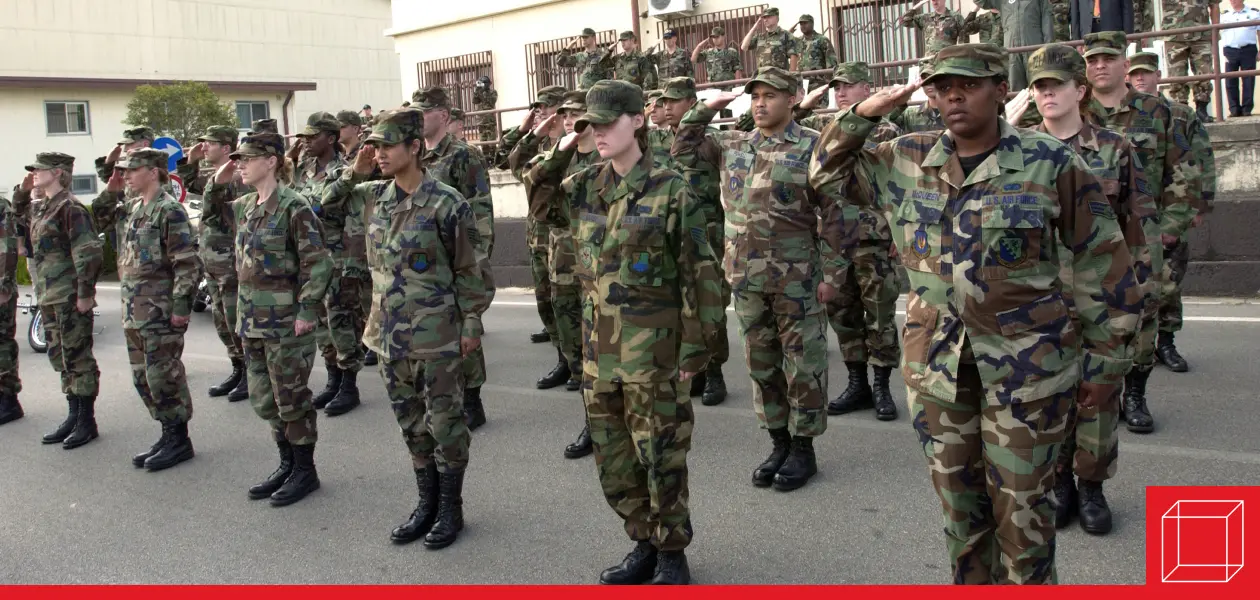Leading Teams
Whether preliterate or postindustrial, people have always used groups to satisfy important needs.

Have you mastered team dynamics? Sociologists Max Weber, Emile Durkheim, and George Simmel explain the role of groups in the human experience.1 Whether preliterate or postindustrial, people have always used groups to satisfy important needs: For childbearing and intimacy, we use marriage and family; for our interest in the supernatural, we create religious sects and institutions; for social order and organization, we form governments; for education, we establish schools; for protection, we raise armies; for economic needs, we form work groups and organizations.2
Group governance emerges because people recognize that they can solve common problems more effectively, such as finding food and shelter and defending against enemies, by pooling resources rather than working as individuals. Individuals are willing to give up certain liberties and resources to gain services they could not provide on their own. Enter the role of leadership – the ability to harness and channel the power of the group.
Currently, teams are used in the majority of organizations in the United States. At many companies, more than three-quarters of an employee’s day is spent communicating with co-workers. To prepare leaders for the challenge, business schools have revised their curriculums to focus on team-based learning, and companies are providing training in group dynamics. Leaders today rely on teams and new technology to enable communication across time and geographic distance. Leadership success requires an understanding of group behavior and the ability to tap the constructive power of teams.3
Teamwork Means Life and Death at Mayo Clinic
The Mayo Clinic, which employs more than 42,000 people at various locations, is an example of an organization that relies on teamwork to provide high-quality healthcare. Mayo hires at the top of the talent pool, but it also seeks people who view quality in medicine as a team endeavor. Mayo shuns the star system in favor of the team concept. Many excellent clinicians will not fit at Mayo, including those who lack interpersonal skills and a one-team attitude. A Mayo physician states, “The Mayo culture attracts individuals who see the practice of medicine best delivered when there is an integration of medical specialties functioning as a team. It is what we do best, and most of us love to do it. What is most inspiring is when a case is successful because of the teamwork of a bunch of docs from different specialties; it has the feeling of hitting a home run in baseball.”4
Positive Versus Negative Group Member Roles
How do you develop a high-performance team? Success depends on the individual and what he or she chooses to do. It depends also on the example and direction of leaders. A high level of group performance can be achieved when formal leaders and influential members of the group model and reinforce positive versus negative group member roles. The following roles help build and sustain a high-performance group. As you read each role, enter the initials of the individual who performs this role in your group or organization.5
Encourager. This person is friendly, diplomatic, and responsive to others in the group. The encourager makes others in the group feel good and helps them make contributions to fulfill their potential. The encourager is a cheerleader, coach, and group advocate.
Clarifier. The clarifier restates problems and solutions, summarizes points after discussion, and introduces new or late members to the group by bringing them up to date on what has happened. The gift of the clarifier is to create order out of chaos and replace confusion with clarity.
Harmonizer. The harmonizer agrees with the rest of the group, brings together opposite points of view, and is not aggressive toward others. The harmonizer brings peace versus war, love versus hate, cooperation versus competition, and unity versus discord.
Idea generator. The idea generator is spontaneous and creative. This person is unafraid of change and suggests ideas that others do not. Often these ideas are just what is needed to solve a problem. The idea generator is almost always a creative and unconventional thinker. Pose a problem, and ideas will flow. Idea generators are rich in ideas – half- baked or fully baked.
Ignition key. This person provides the spark for group action, causing the group to meet, work, and follow through with ideas. The ignition key is often a practical organizer who orchestrates and facilitates the work of the group. In this sense, the ignition key plays a leadership role in group action.
Standard setter. This person’s high ideals and personal conduct serve as a model for group members. The standard-setter is uncompromising in upholding the group’s values and goals, and thus inspires group pride. The standard-setter is often an expert, possessing knowledge and skills deemed important by the group.
Detail specialist. This person considers the facts and implications of a problem. The detail specialist deals with small points that often have significant consequences in determining the overall success of a group project. A vigilant finisher, the detail specialist searches for errors and omissions and keeps the group on red alert.
The following are group member roles that reduce group success. Don’t initial these roles so that others may see.6
Ego tripper. This individual interrupts others, launches into long monologues, and is overly dogmatic. The ego tripper constantly demands attention and tries to manipulate the group to satisfy a need to feel important.
Negative artist. This person rejects all ideas suggested by others, takes a negative attitude on issues, argues unnecessarily, and refuses to cooperate. The negative artist is pessimistic about everything and dampens group enthusiasm, unlike a helpful “devil’s advocate” who constructively poses alternative views.
Above-it-all person. This member withdraws from the group and its activities by being aloof, indifferent, and excessively formal, and by daydreaming, doodling, whispering to others, wandering from the subject, or talking about personal experiences when they are unrelated to the group discussion. The above-it-all person has a “don’t care” attitude that detracts from group progress.
Aggressor. This person attacks and blames others, shows anger or irritation against the group or individuals, and deflates the importance or position of the group and the members in it.
Jokester. This person is present for fun, not work. The jokester fools around most of the time and will distract the group from its business just to get a laugh.
Avoider. This person does anything to avoid controversy or confrontation. The avoider is dedicated to personal security and self-preservation and is unwilling to take a stand or make a decision.
Power victim. This is the person who seeks negative attention and whose motto seems to be “You may not like me, but you’ll never forget me.” The power victim draws time and energy from the group.
In the Hard Hat, Jon Gordon describes the roles George Boiardi played on his Cornell lacrosse team. Boiardi was an exceptional athlete, who was a role-model team player. He worked harder than anyone else, didn’t care about personal glory, and always sacrificed for the good of the team. On March 24, 2004, Boiardi died after taking a ball to the chest while defending the goal during a game against Binghamton University. The Hard Hat distills 21 lessons to be a great teammate, based on the example of George Boiardi’s days at Cornell. He served the roles of ignition key, encourager, and standard-setter and was never a negative artist, ego tripper, or above-it-all person. His positive energy, self-sacrifice, and high standards helped his team succeed.7
As a practical measure, consider your own work group or organization, and ask, Who is playing positive versus negative group member roles? Who is providing encouragement, harmony, new ideas, and high standards? Take the time to let members know how important they are to the group’s success, and how appreciated they are for their efforts. Be specific and personal if you want to reinforce these helpful behaviors. Above all, be sure that your own actions are positive and constructive.
Leader as Team Builder
Teamwork is essential for group success. The testimony of basketball star Michael Jordan, a superb individual contributor, is instructive for people in all fields of work: “One thing I believe to the fullest is that if you think and behave as a team, the individual accolades will take care of themselves. Talent wins games, but teamwork and intelligence win championships.8 Leaders in every endeavor know the power of the team concept for achieving results. Effective leaders value teamwork as a virtue, and they demonstrate this by their own efforts as team builders and champions of the group.9
A role model for team building and coaching to succeed was Pat Summitt, former head coach of the University of Tennessee’s women’s basketball team (1974-2012), with eight NCAA championships and the highest winning percentage (.840) of any men’s or women’s college basketball program in history. Summitt had both a love for the sport and a passion for developing others. She said she enjoyed practice as much as the games because teaching was her “real passion.”10
For related reading, see:
The Hard Hat by Jon Gordon
Team of Rivals by Doris Kearns Goodwin
1. George Simmel, The Society of George Simmel, trans. and ed. Kurt Wolff (Glencoe, IL: Free Press, 1950); and Max Weber, Basic Concepts in Sociology, trans. H.P. Secher (New York: Philosophical Library, 1962).
2. Bernard Berelson and Gary Steiner, Human Behavior (New York: Harcourt, Brace, and World, 1964).
3. G. Porter and M. Beyerlein, “Historical Roots of Team Theory and Practice,” in M. Beyerlein, ed., Work Teams (Dordrecht, Netherlands: Kluwer, 2000), pp.3-24.
4. C. Li and J. Bernoff, Groundswell (Boston: Harvard Business School Press, 2011); and L. Berry, “The Collaborative Organization,” Organizational Dynamics (August 2004), pp.228-41.
5. K. Benne and P. Sheats, “Functional Roles of Social Issues,” Journal of Social Issues 4 (1948), pp. 41-49.
6. W. Stattler and N. Miller, Discussion and Conference, 2nd ed. (Englewood Cliffs, NJ: Prentice Hall, 1968), pp.476-88.
7. J. Gordon, The Hard Hat (Hoboken, NJ: John Wiley and Sons, 2015).
8. M. Jordan, I Can’t Accept Not Trying (San Francisco: Harper, 1994), p.20.
9. P. Lencioni, The Five Dysfunctions of a Team (San Francisco: Jossey-Bass, 2002); and D. Goodwin, Team of Rivals (New York: Simon and Schuster, 2005).
10. D. Patrick, “Summitt Still Driven to Be Best,” USA Today (March 15, 2005), p.2C.



